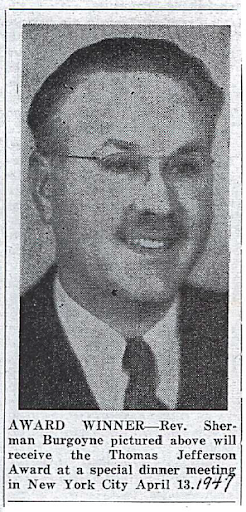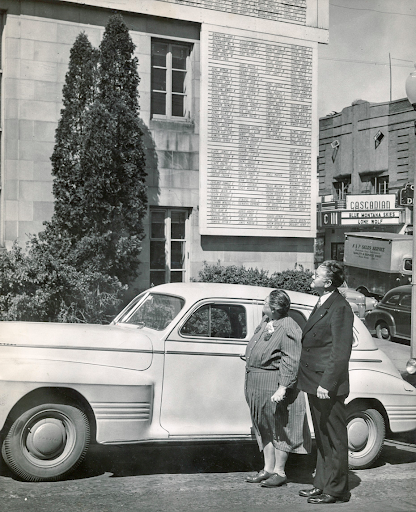OLD HOOD RIVER CHURCH. NEW DIGS.
The original Asbury Church was built in. 1896. Clearly, the building has a lot of history.
We’ve included some select chapters below. If you want to know more, just ask.
THE ORIGINAL ASBURY M.E. CHURCH
The site for the Asbury Church was purchased in the late 1800s for $300. In 1896, the original Asbury Church was built. For just over a decade, the Methodist congregation convened in the 1,500-square foot building.
THE 1912 ADDITION
In the early 1900s, Hood River hit an upswing.
“It was everywhere talked through the valley that anyone owning a first class bearing apple orchard could net $1,000.00 profit per acre per year. A few were reported to have actually done so.” wrote Reverend Frank R. Spaulding, Asbury’s minister from 1898 to 1903.
In this era, many of the older members of the church’s board of trustees stepped down, and, in Reverend Spaulding’s words, “faster blood” replaced them, and dreamed up a plan for an extravagant new building.
Construction began in 1910 when they plucked the original building, rotated it ninety degrees and moved it to the back of the lot. Architect R.R. Bartlett, who also designed Hood River’s Hotel Oregon (2nd & Cascade) and Heilbronner Block (3rd & Cascade), drew plans for the new sanctuary. Portland’s famous Povey Bros. crafted the stained glass. And, on December 8th, 1912, the new Asbury M.E. Church was consecrated. The custom pipe organ from Wicks Pipe Organ Company of Highland, Illinois arrived in January, 1913.
The construction of the new addition was not as smooth or simple as that makes it sound. As quickly as Hood River’s boom days started, it seemed, they came to an end, and left, in their wake, the Asbury congregation with a partially finished building and a lot of debt. In 1910, a young minister by the name of E. McOmber was stationed at Hood River, and arrived to find the old building with an exterior wall removed in preparation for the addition, a piece of canvas draped over it and no solid plans for the project’s completion.
“Brother McOmber labored faithfully but found the task too great. At the close of the Conference year he retired from active work and dropped from our sight. Under this building lie the buried hopes of a faithful man,” Reverend Spaulding wrote.
Reverend W.B. Young, the minister who replaced McOmber, did see the new addition to completion over the course of his five year stint in Hood River, though it took the congregation another fifteen years to pay the building off in full.
WWII & THE JAPANESE
Spring of 1942 marked the beginning of an ugly chapter in the history of the country as a whole and in the Hood River Valley in particular. On February 19th, following the attack on Pearl Harbor, the federal government ordered that every person of Japanese descent report to concentration camps.
Hood River became a town upon the completion of the railroad in 1882, and many of the Japanese families in the Hood River Valley arrived along with it. Many of those families then went on to help clear land and plant orchards. Some had even saved enough to purchase land and plant their own fruit trees. When they boarded the train in 1942, they left all of that behind--most of it for good.
Hood River hit a particularly shameful low point when, on the morning of November 20th, 1944, men from the American Legion convened at the Hood River County Courthouse with a can of black paint, and blotted out the names of the sixteen local veterans of Japanese descent from the war memorial.
Reverend W. Sherman Burgoyne and his wife, Doris Burgoyne, moved to Hood River in the summer of 1942 when Reverend Burgoyne was assigned as the minister to Asbury. Neither of them had ever met a Japanese person. Nonetheless, the couple stepped up to publicly denounce the defamation of the names of the Japanese veterans when, on January 5th, 1945, Reverend Burgoyne had a letter to the editor published in the Hood River News:
“To the Editor: I have tried to keep silent, seeking to persuade myself that the removing of the American service men's names was a Legion affair. But I was mistaken! Having occasion to be in several cities lately, and making myself known, have received several times the comment: "Oh! You are from That Legion town." The atmosphere grows cold at once.
One man asked me if we had pushed the tombstones over in the Japanese cemetery yet! I come home hanging my head in shame! It is not only the Legion post, but every person in Hood River county that is disgraced.
Must I, as a taxpayer, look upon our Courthouse down through the years and strive to keep down the resentment within me? The Courthouse belongs to Hood River County and all its people.
I propose that the Hood River post of the Legion take their names up on the hill to their own building there and scratch off all the names they wish.
Then permit the people of Hood River county to redeem ourselves in the eyes of the world by placing all the names of our service men and women on the walls of our Courthouse.
Yours for the American way, A Taxpayer, W. Sherman Burgoyne”
Years of persecution followed. Someone threw a rock through the window of the Burgoynes’ parsonage. Reverend Burgoyne was frozen out of membership in civic clubs. The Burgoynes had to sell their 10-acre pear orchard with fruit still dangling from the trees, because no one would buy their crop.
"No one knows how hot it was for us," said Doris Burgoyne. "We expected to be beaten up or run out of town any moment."






